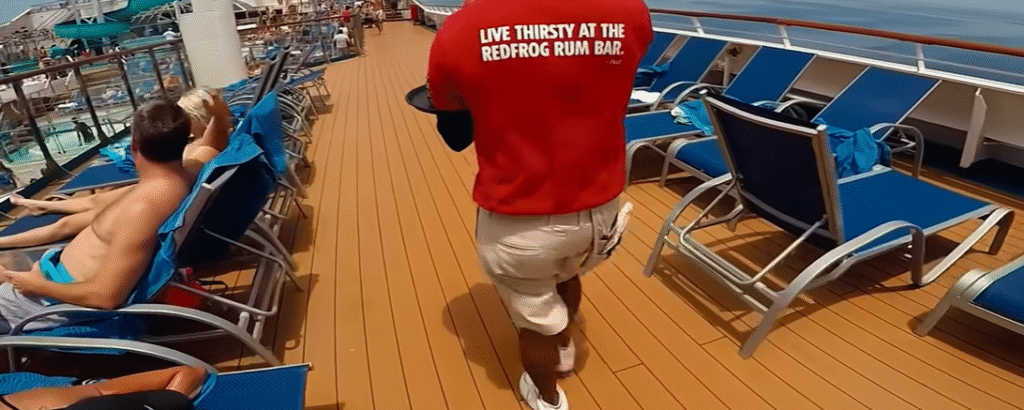Poop Cruise: Carnival Triumph Incident (2013)
Key Facts
- Cruise Ship Name (at time of incident): Carnival Triumph
- Renamed Ship: Carnival Sunrise
- Date of Incident: February 10–14, 2013
- Location: Gulf of Mexico
- Incident: Engine fire leading to power failure and complete system breakdown
- Passengers Aboard: 3,143 passengers + 1,086 crew
- Main Issues: No plumbing, no air conditioning, sewage overflow, food shortages
- Total Refurbishment Cost: $200 million
- Ship’s Current Status: Active as Carnival Sunrise
- Reference: Carnival Sunrise on Wikipedia

A luxurious cruise from New Orleans to Mexico took a sudden and foul turn at the beginning of 2013. A Destiny-class ship, the Carnival Triumph, had been chartered for what should have been a standard four-day trip across the Gulf. Rather, it quickly evolved into a tale of high-seas survival that would eventually come to be known by the hideous moniker, The Poop Cruise. Surprisingly, its tale continued after the final traveler got off the ship.
The ship’s primary power systems failed on the fourth day of the voyage due to a fire in the engine room. Life on board rapidly disintegrated in the absence of refrigeration, plumbing, or propulsion. The passengers were advised to relieve themselves in their bags by the crew, who were notably limited in what they could provide. However, waste started to back up through showers and toilets because some people didn’t follow the rules. The interior of the ship became remarkably uninhabitable in a matter of hours.
Mattresses were being dragged out to the upper decks. As the temperature rose and the air conditioning was turned off, the outdoors provided a noticeably more comfortable atmosphere—until the stench of human feces reached it. Tents were made on the spot. Some families made sun-shaded shelters out of bedsheets and towels. The helplessness, stress, and desperation turned into something approaching chaos. Food rations caused fights. Others wanted seclusion in an environment where not much was left.
However, what really stands out about this cruise is not just what transpired during the catastrophe, but also how Carnival responded to it afterwards. Instead, the company spent about $200 million converting the ship from stern to bow instead of retiring it. In 2019, they dismantled it, rebuilt it, renamed it Carnival Sunrise, and optimistically unveiled it in New York City. It was a tale of rebirth. Reinvention without disclosure, however, has a tendency to recur.
TikTokers and cruise passengers have been discovering over the past year that they had unintentionally taken a vacation on the same ship that was once covered in sewage, frequently with astonishment and mild nausea. Through old photos, one user, Sarah Elizabeth, found out that the rebranded ship was used for her first cruise in 2022. Her shocked response quickly went viral after being shared with sardonic humor and incredulity. After her cabin flooded before departure, another content creator described how she was told it was “safe” to sail.
A new online investigation was spurred by these viral findings. Some wondered if Carnival ever took responsibility for its past. Whether the ship still had a slight smell was a joke among others. “You can change the name, but you can’t scrub the history out of the corners,” several commenters said.
The Poop Cruise episode of the Netflix documentary series Trainwreck, which reexamines cultural catastrophes, exposed the unsettling realities of this voyage. Scenes of filthy air, overflowing toilets, and complete breakdowns in civility clearly unsettled the audience. The Poop Cruise fits into a larger pattern of badly run, massive events, as the same series has previously addressed incidents like the tragic Astroworld crowd crush and the chaotic breakdown of Woodstock ’99.
The Carnival Triumph incident had a particularly significant impact on corporate responsibility and public safety. A “teachable moment” resulted from the aftermath, according to Carnival’s official statement. Over $500 million was spent on new emergency procedures, enhanced fire prevention, and sophisticated system redundancy throughout the fleet. Despite being costly, these improvements greatly decreased the possibility of similar failures in the future.
The incident prompted a reassessment of cruise lines’ preparedness for the unimaginable for the entire cruise industry. Newer ships were redesigned with improved fire insulation, dual power systems, and more flexible emergency communication techniques in order to capitalize on the painful lessons learned from Triumph. Although that is undoubtedly progress, many people think that memory and transparency are just as important for safety as sprinkler systems and metal bulkheads.
Carnival strategically redesigned its image to highlight Sunrise’s new features and improvements. The rebranding was successful for the majority of passengers—until social media started to piece the past back together. And maybe that’s where the bigger change is. Nothing is forgotten in a time when a single video can spark a worldwide recall, not even the poop cruise.
The lesson is surprisingly hopeful despite the embarrassment. A significantly higher standard of operational safety resulted from the incident and the subsequent outcry. It also showed how effectively digital platforms can demand accountability. TikTok evolved from a place for humor to a digital repository of memories that was beyond the control of corporate branding.
